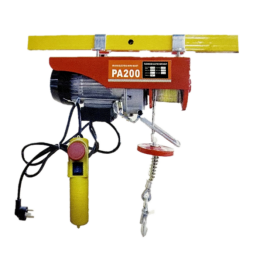


Heavy Duty Chain Blocks An Essential Tool in Industrial Lifting
In the world of heavy machinery and industrial lifting, safety and efficiency are paramount. One tool that plays a quintessential role in this industry is the heavy-duty chain block. This device, also known as a chain hoist, is essential for lifting and moving heavy loads in various applications, from construction sites to warehouses.
What is a Heavy Duty Chain Block?
A heavy-duty chain block is a mechanical device used to lift and lower heavy objects using a chain and a pulley system. Typically made from robust materials, these chain blocks are designed to handle substantial weights, making them ideal for industrial settings where heavy lifting is a routine necessity. The construction of these devices often includes a hook for easy attachment, a sturdy frame for support, and a quality chain that guarantees durability and effective lifting power.
Key Features of Heavy Duty Chain Blocks
1. Load Capacity Heavy-duty chain blocks are engineered to lift weights ranging from a few tons to several dozen tons, depending on the model. Choosing the right load capacity is crucial to ensure safety and efficiency in lifting operations.
2. Durability Constructed from high-quality materials such as steel or aluminum alloys, these chain blocks are built to withstand harsh working conditions. Their rust-resistant features make them suitable for outdoor and industrial applications.
3. Ease of Use Most heavy-duty chain blocks come with a hand chain mechanism, allowing operators to lift heavy loads without the need for electrical power. This mechanical feature is not only cost-effective but also reduces dependency on electrical sources, which can be crucial in outdoor environments.
4. Safety Features A reliable chain block is equipped with safety mechanisms to prevent the possibility of accidents. These may include overload protection, automatic load brakes, and safety hooks to ensure the load remains secure during lifting processes.
5. Versatility Heavy-duty chain blocks are highly versatile. They can be utilized in various settings, including factories, workshops, construction sites, and warehouses, allowing for the lifting of machinery, materials, and other heavy items.

Applications of Heavy Duty Chain Blocks
The applications of heavy-duty chain blocks are as diverse as the industries they serve. In construction, they are crucial for lifting steel beams, scaffolding, and other heavy materials into position. In manufacturing, these devices assist in shifting loads from one station to another, optimizing workflows and increasing productivity.
In warehouses, chain blocks facilitate the moving of palletized goods or machinery, making the process more efficient and reducing the risk of injury to workers. They are also invaluable in automotive workshops, where heavy engines and components are lifted with precision.
Benefits of Using Heavy Duty Chain Blocks
1. Efficiency Heavy-duty chain blocks significantly increase the efficiency of lifting operations. They minimize the time and labor required to move heavy loads, which is beneficial for productivity.
2. Cost-Effectiveness Compared to electric hoists, chain blocks tend to be more affordable and require less maintenance. Their simplicity means that they can be used in various situations without extensive training.
3. Safety With robust safety features, heavy-duty chain blocks ensure that even the heaviest loads can be lifted with minimal risk, making them a safer alternative to other lifting methods.
4. Portability Many models are designed to be easily portable, allowing operators to move them to different locations as needed, which enhances their utility in diverse work environments.
Conclusion
Heavy-duty chain blocks are a fundamental component of industrial lifting equipment, offering crucial benefits in terms of safety, efficiency, and versatility. Whether in construction, manufacturing, or warehousing, these tools empower workers to perform their tasks effectively while minimizing risks associated with heavy lifting. Investing in a high-quality chain block not only streamlines operations but also contributes to a safer working environment, making it an indispensable asset in any heavy lifting scenario.



